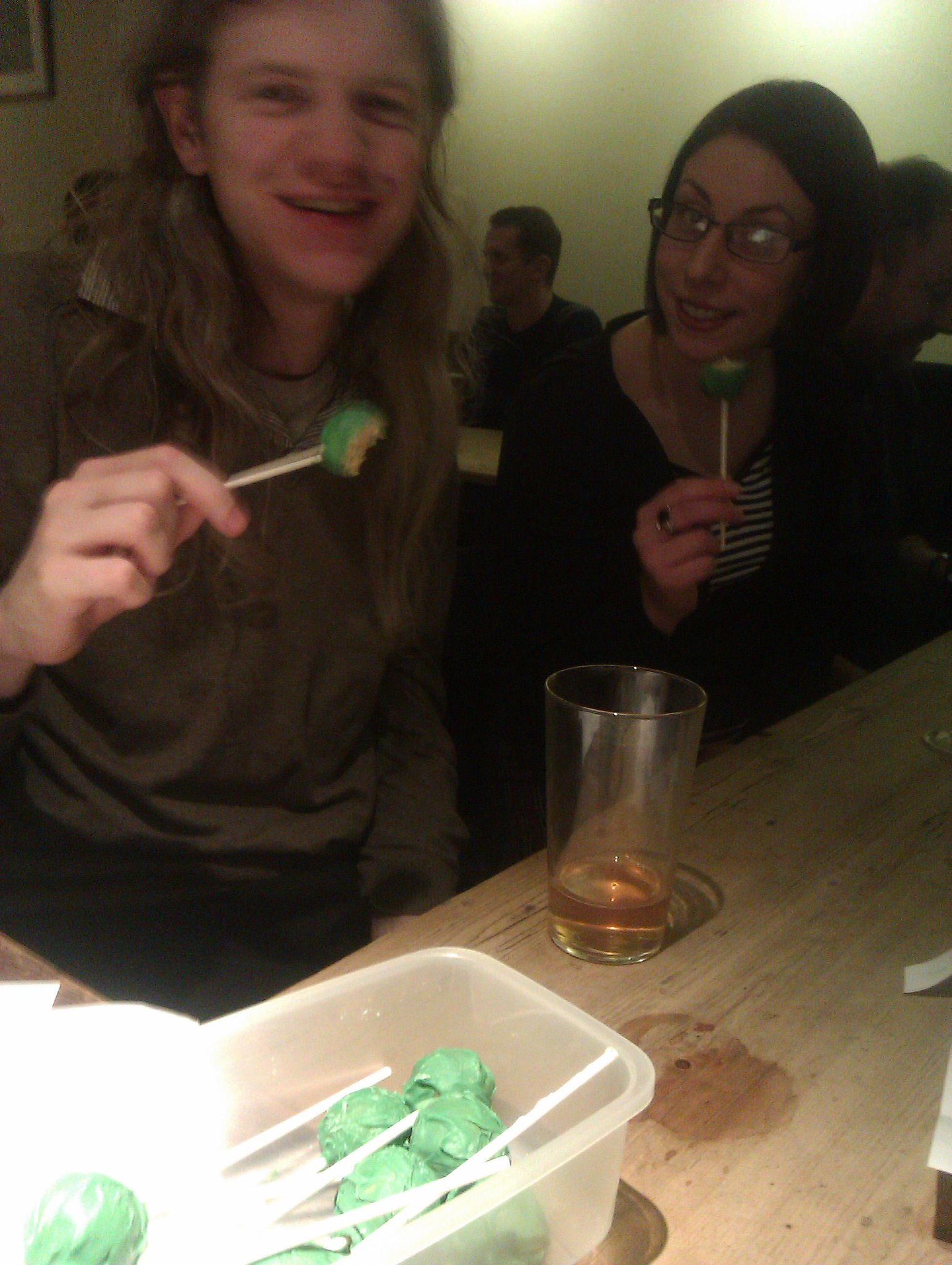Having been absent for last month’s MathsJam, I was keen to have a great time this month so I prepared some nice Easter-based things (since this is the nearest MathsJam to Easter). I thought about egg-shapes, and how to construct them, and came up with a few fun things. The turnout was huge (at its peak, 21+ε: one attendee was expecting) and we spread out over three tables.
You're reading: MathsJam
Newcastle MathsJam January & February 2013 recaps
I’ve finally finally got round to writing up my notes from the last two Newcastle MathsJams, over at my mathem-o-blog.
MathsJam expands yet again
Gradually, gradually, the mathematicians are taking over the world. Having already conquered (by which I mean ‘colonised pubs once a month’) in places as far-flung as Melbourne, Houston, Bombay and Edinburgh, MathsJam will be making its debut in Cape Town, South Africa on Tuesday February 19th.
Manchester MathsJam January 2013 Recap
 The first MathsJam of the year was well attended. Despite not being on our usual table (there was no jazz band on this week, so we were allowed a bigger table further into the pub) everyone found us ok, and a few people brought baked goods – always a precursor to an excellent MathsJam.
The first MathsJam of the year was well attended. Despite not being on our usual table (there was no jazz band on this week, so we were allowed a bigger table further into the pub) everyone found us ok, and a few people brought baked goods – always a precursor to an excellent MathsJam.
We started off with some quick mental arithmetic brainteasers: how many straight cuts do you need to make to slice a flat square cake into 196 equally sized square pieces? Several people got the answer quite quickly, while others tried to cheat by stacking cake pieces and moving them around between cuts. No cheating!
AS maths results and batting averages
Phil Harvey gave a talk on this subject at last November’s MathsJam conference. We liked it so much, we asked him if we could put it on the site. Phil’s kindly written his talk up as an essay for us.
I am 64¼ years old and I’ve been a maths teacher all my working life. In that time things have changed. Long gone are the days when gowned masters would sweep in, silence any murmur with half a raised eyebrow, and delight compliant uniformed schoolchildren with chalk-covered boards of mathematical exposition.
No, you’re right. That never happened outside the covers of Goodbye Mr Chips, even in my day.
The reality then. Schoolchildren have morphed into learners. Exam results rule. Quality (in the sense that Orwell might have used the word) is managed by quality managers. And so our working lives are driven by the pursuit of Ofsted targets, success rates, achievement rates, benchmarks, observation grades, results. And every joyless lesson has its own lesson plan, with aims, objectives, learning outcomes and action points. But above all, those damned results – and every year, year after year, they had to IMPROVE.
Well I was no good at any of this stuff – and consequently I always got on very badly with my managers. Until one year…
Videos from MathsJam 2012
While we were at the big MathsJam conference a few weekends ago, we took the opportunity to point a camera in people’s faces and ask them to tell us something interesting. Because of the high quality of MathsJam attendees, this went better than it would in most other contexts.
Here’s a collection of clips we recorded while people were digesting both their dinners and the first day’s talks.
[youtube url=http://www.youtube.com/watch?v=fg_IeC1M5D4]
Radii of polyhedra
(At last month’s big MathsJam conference, we asked a few people who gave particularly interesting talks if they’d like to write something for the site. A surprising number said yes. First to arrive in the submissions pile was this piece by Tom Button.)
The formula for the surface area of a sphere, $A=4\pi r^{2}$, is the derivative of the formula for the volume of a sphere: $V=\frac{4}{3}\pi r^{3}$.
This result does not hold for a cube with side length $a$ if the surface area and volume are written in terms of $a$. However, if the surface area and volume are written in terms of half the side length, $r=\frac{a}{2}$, you get the surface area $A=24 r^{2}$, which is the derivative of the volume, $V=8 r^{3}$.